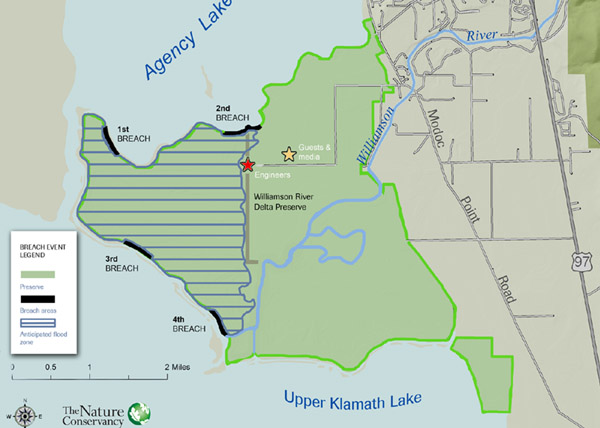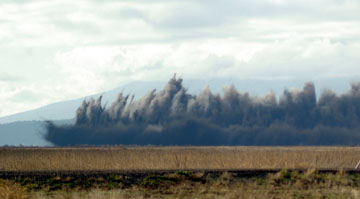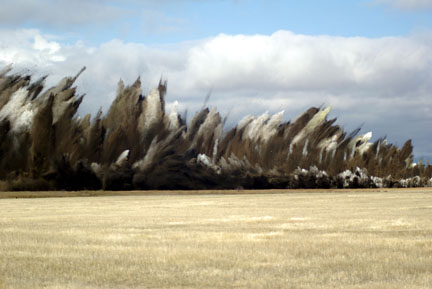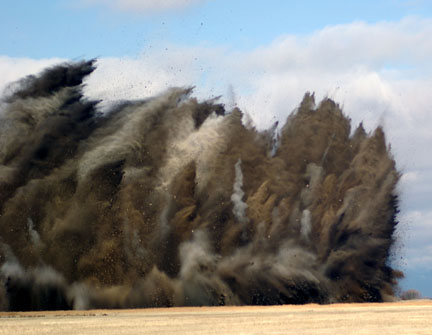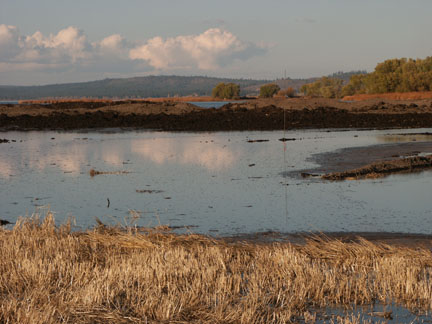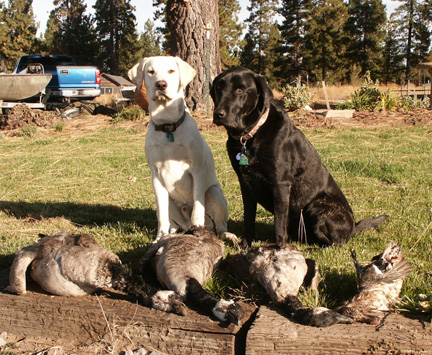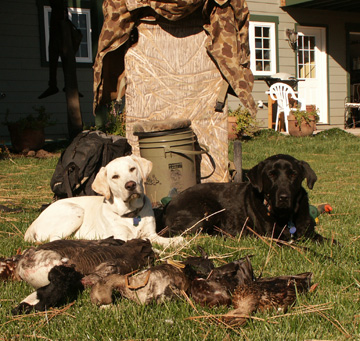Redding, California - Oct. 25, 2007
The Sacramento River from Redding to Red Bluff
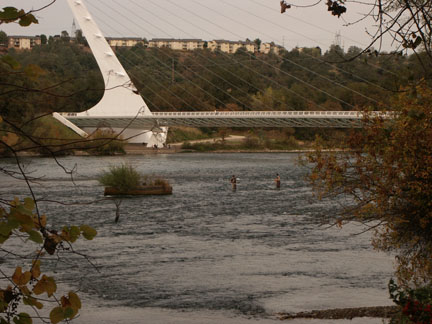
So where does a former Montana fly fishing guide residing in Chiloquin, Oregon get his float fishing river fix. Perhaps the nearby Williamson River, maybe the Rogue or the Klamath or even the Trinity, but my choice will probably be the broad, big muscled lower Sacramento River. Flowing from the Keswick dam at the outlet of Lake Shasta, the lower Sacramento River flows through the town of Redding on its way to the San Francisco Bay. Miles of prime trout habitat line both sides of the river all the way down to Red Bluff. Offering four separate salmon runs, along with steelhead, the trout are healthy and fat. According to Michael Caranci, director of outfitters for The Fly Shop in Redding, California, when the dam operators were required to control flows and water temperatures to protect salmon runs and salmon fry, the trout benefited, and the fishing gets better year after year. I met with Michael at The Fly Shop, which may be seen from I-5 just north of the Churn Creek Exit. With October being their busiest month, Michael estimated they would finish the month with close to 400 trips. In spite of the hectic flow of anglers asking to book if there were any cancellations and the phone ringing constantly, Michael took the time to describe and promote the lower Sacramento River. I was impressed, but then maybe that is the reason The Fly Shop was voted the “Top Shop” by the fly fishing industry in 2003.

Two of the most productive months of the year are April and October. March and April basically kick off the season with prolific hydropsyche caddis hatches. The “Mother’s Day Caddis Hatch” bursts on the scene blanketing the air with millions of bugs on warm, sunny days. Michael said, “The trout gorge themselves and eat, eat, eat, but the problem sometime becomes too many of the real thing surrounding an imitation.” The caddis continue to hatch throughout the season and into the summer during the last hour of the day, which provides some good dry fly fishing. Many guides, in spite of the hatches, continue to fish under the surface with sparkle pupas, peeking caddis, Bird’s Nest or bead-head nymphs in size 12 to 14, along with smaller emerger patterns. In May sporadic “hatches” of salmonflies appear through out the system but not on a predictable basis. Each year the salmonflies presence in the river grows.
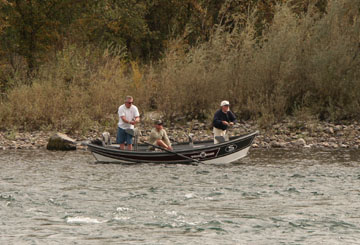
With rising temperatures of summer often exceeding 100 in July and August, the pressure of anglers on the river wanes, but the fish continue feeding in water temperatures from 55 to 60 degrees. I met a preacher working on his sermon on his tailgate at the Bonnyview Bridge near the water’s edge. He said he liked fishing from his kick boat during the summer. With his legs submerged in cold water and his torso absorbing the hot rays of summer, he said he experiences heaven and hell in the same moment. He told me to emphasize to readers that sitting this close to the water was actually about ten degrees cooler. He said he keeps himself hydrated with lots of water and very busy with good fishing. Typically, however, the first and last hours are the most productive fishing of the day. By late August the nights are cooling and day time temperatures began dropping to the nineties.
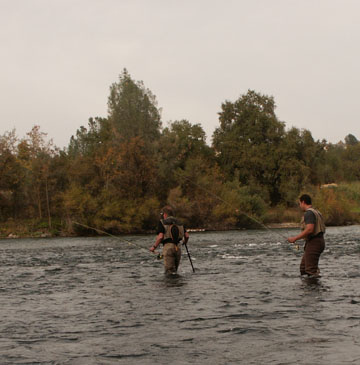
By September the first salmon runs appear. By October the salmon are busy building reds and kicking up debris and dislodging nymphs. The trout move in behind the spawning beds and feast on nymphs and the loose eggs that get washed downstream. Michael described it as “salmon omelets.” Michael advised me to be especially vigilant when wading so as to not disturb or destroy the beds, which are easily identified by the light-colored depressions in the gravel. One successful technique to employ during October is a strike indicator, lead split-shot, a single egg pattern and one or two nymphs.
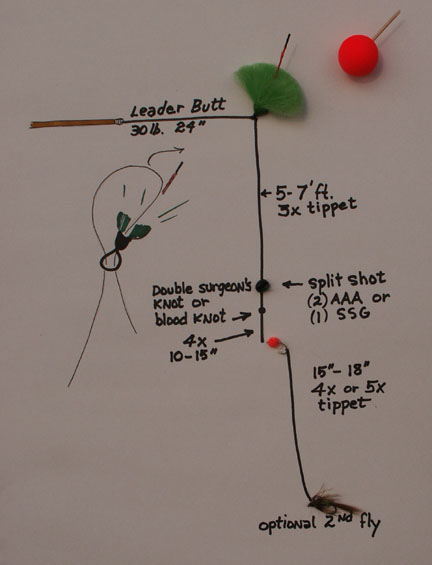
In spite of the increased pressure during October and November, guides spread themselves out over seventy miles. Michel stated thattypically by Thanksgiving or earlier the rains sweep up the valley and blow the river out below Cow and Cottonwood Creek, but it is rare that the upper stretch will be gone for more than a day or two at a time. That is actually one of the big assets of the Lower Sac, that it remains a viable fishery almost all winter long.". Most anglers wait for spring, but Michael pointed out that late winter on the lower Sacramento River offers good fishing between storm fronts. The latter part of the winter does not have the impact on water flows that November and December experience. Although air temperatures hold in the 50’s and 60’s and the fish slow in their feeding activity, more larger fish in the 18-inch range are caught during this time period with an added bonus of late winter baetis hatches. By early spring trout are gorging themselves on alevin, salmon fry, and gaining up to one pound a month from these tiny fish with the egg sacks still attached. If there is a dry fly period, it is in March and April when the caddis return and a new season is heralded.
To contact Michael and book a trip with The Fly Shop, you may reach him by phone at 1-800-669-3474 or at Michael@theflyshop.com or www.theflyshop.com
Launch Ramps and Access Points: Keep in mind that the time of year and the water levels flowing out of the dam determine whether wading is a viable option. Because the current is so strong, I recommend inflatable suspenders and a wading staff. For a detailed guide to the river, I recommend that you purchase the map, Sacramento River Fishing Access & Accommodations. The map may be purchased at The Fly Shop in Redding or by visiting their web site at www.streamtime.com. I welcome all scrutiny, corrections and advice, as this article will be a work in progress over the next year. Contact David Archer at dave@glaciertoyellowstone.com
2007 Shuttle Fees from The Fly Shop:
Posse Grounds as far as Sacramento RV Park…$25
Posse Grounds to Anderson…$30
As high as Bonnyview to Balls Ferry…$35
As high as SAC RV to the Barge Hole (Balls Ferry road near old mouth of Battle Creek)
…$40
As high as Balls Ferry to Jelly’s…$45
As high as Balls Ferry to Bend Bridge…$50
Add map 1
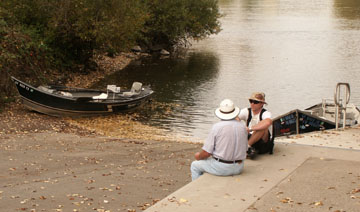

1. Posse Park Boat Launch + Wading: From I-5 take Highway 299 West and make a right onto Auditorium Drive (convention center). You may also reach the Posse Grounds from Cypress Street by turning north on Park Marina Drive, which ends at the convention center. This is the first launch past the A.C.I.D. Irrigation Dam a couple of miles below Lake Shasta’s Keswick Dam. The launch site is behind the rodeo grounds near the convention center and provides good parking for all sized rigs and excellent access to Posse Riffle, as well as the numerous riffles and runs down to Redding’s famous Sundial Bridge. During low water periods in the fall, wading anglers have numerous hot spots they may reach in a half mile stretch below the launch. During the summer months the numerous shaded, picnic spots provide welcome relief when temperatures climb to three digits. Turtle Bay Trail, across from the convention center and downstream from the launch, also provides access.
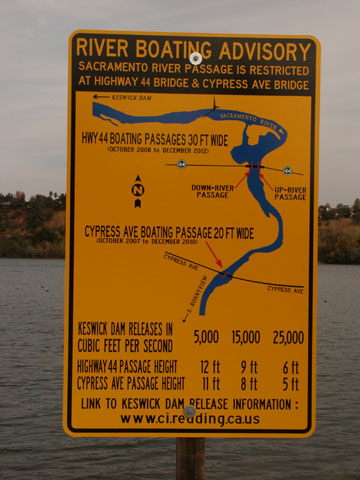
Two of Redding’s bridges are under construction for the next couple of years. The river has restricted passages in two places.
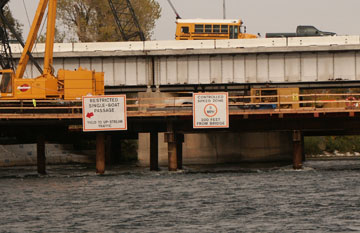
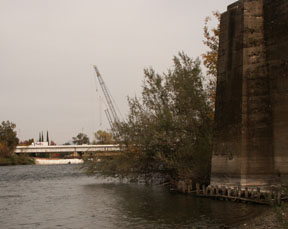
2. Cypress Street Bridge Area: Exiting from I-5 onto Cypress Street in downtown Redding, move to the left lane and turn left on Hartnell at the light just short of crossing the bridge. This is a business section. Make the first right turn onto Henderson. Look for the sign “Road Ends 400 feet ahead.” Turn right here and drive behind the businesses and park. Take the dirt path towards the Cypress Street bridge or turn downstream fifty yards and fish the riffle and pool by the old bridge abutment. This is a popular spot for the float fishing guides before they cross over and fish the western bank of the river. Crossing the bridge, anglers will find some water above and below the bridge.
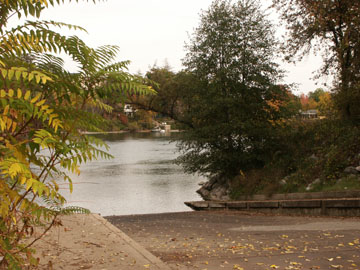
3. South Bonnyview Road (Bridge) Launch: This is an excellent boat launch and parking area, although it doesn’t provide good water for fly fishing in the near vicinity. From Posse launch to South Bonnyview is a half day float.
4. Cascade Park: Exit I-5 west on South Bonnyview Road. Turn left on Market Street or Highway 273 and then left again on Girvan and proceed a short distance to Cascade Park. I did not get far without waders. The park is adjacent to islands, although the channel was very shallow. South of the park is Niles Riffle, but I never made it – another time.

5. Anderson River Park (launch): This is another spot that I missed. The Fly Shop provides maps to local wading spots, and this is one of them. South of Redding on I-5, take the Deschutes Road Exit (Factory Outlet Stores). Go west and turn left (north) on Balls Ferry Road and then right on Dodson Lane to Anderson River Park. Follow the trail down river for good riffles. An improved boat launch is located on Rupert Road, which may be accessed from a loop off Dodson Lane.
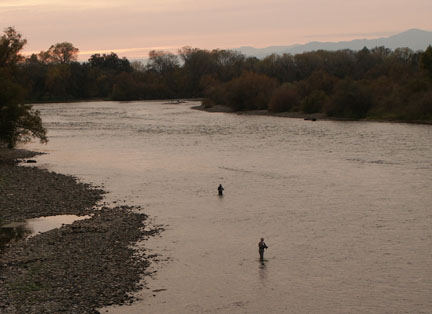
6. Deschutes Road Bridge: From I-5 take the Deschutes Road Exit a couple of miles east to the Deschutes Road Bridge.
7. Balls Ferry Bridge (Bridge) Launch: From I-5 take the Gas Point Road Exit and follow Balls Ferry Road until it intersects with Ash Creek (sharp corner). Follow Ash Creek about a mile to the boat launch. (The bar here serves a good burger.) It is five miles to Cottonwood, a quaint little town close to I-5.
8. Reading Island: From I-5 take the Gas Point Road Exit and follow Balls Ferry Road until it intersects with Adobe Road. Turn right and proceed to the parking area less than two miles. Maps are not always accurate; the public campground has been closed by the county, and the launch is only good during high flows onto a side channel, and even then for smaller boats. Now, I did talk to a lady who lived close by and was walking her dog. She said she often sees fly fishermen casting on the main stem a short distance from the parking lot.
9. Old Mouth Battle Creek (Launch and primitive camping): The primitive camping is just that – primitive and rocky! Look for a drop off onto a dirt road. There are a couple of water holes to cross, but they are solid underneath. Nonetheless, after a rain this could be a potential mess without four wheel drive. The beach is hard packed cobblestone, and during October it is a popular spot for local salmon anglers (especially during the weekend). It is also a launch for boaters heading up to the Barge Hole just upstream. This section offers a beautiful riffle that left me frustrated and perplexed. I chalked it up to a full moon – not my skills! I talked to two neighborhood river watchers who said that during the caddis hatches the riffle comes alive with trout just at dark. From I-5 take the Jellys Ferry Road, cross the bridge and continue until you crest a plateau and see the river stretching out below you. From the crest, some anglers hike down to the river and fish Lawrence Riffle. As you drop off the crest down the slope, you will see on your left a long beach with a primitive boat launching spot. Just ahead on the left in the trees is the turn-off to this primitive site.
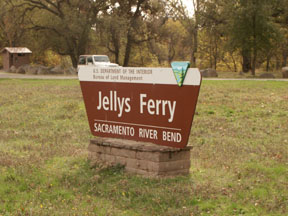
10. Jellys Ferry Bridge (Launch): From I-5 take the Jellys Ferry Road to the bridge and parking area and boat launch. (No camping.) This is a rough boat ramp; during low water periods you will be launching in wet sand and mud. I would recommend 4x4 vehicles after a rain. The site is run by the Department of Interior, but it does not allow camping.
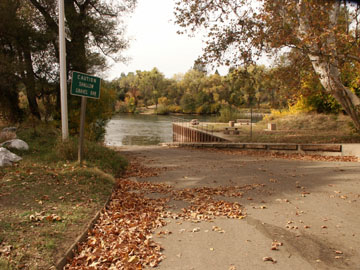
11. Bend Bridge (Launch): From I-5 take the Jellys Ferry Road Exit. Turn right on Bend Ferry Road by the Bend RV Park (916-527-6289) and store and cross the bridge to a county launch site. Fish the Lower Bend Riffle or take the trail on the north side of the parking lot to riffle water upstream.
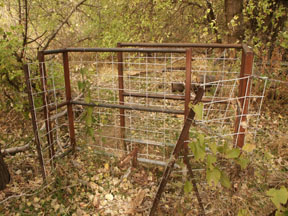
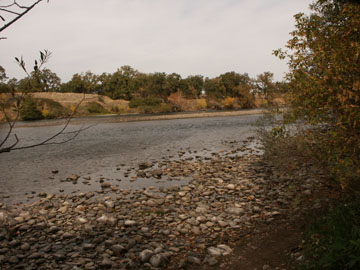
RV Camping Parks
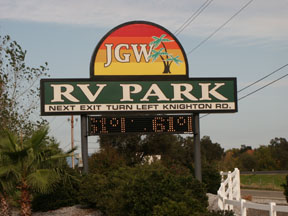
JGW RV Park: The JGW RV Park is located on Riverland Drive on the west side of Interstate-5, south of the Knighton Road exit. Exit 673 is approximately five miles south of Redding. (530) 365-7965. Reservations: 1 800-469-5910. www.jgwrvpark.com. Email: jgwrvpark@charter.net. (In the north corner of the park is a 5-strand, barb-wire fence. Go around it at the river’s edge and walk upstream 100 yards to a great riffle, where I met a couple of fat rainbows. The resort provides a rough boat launch.
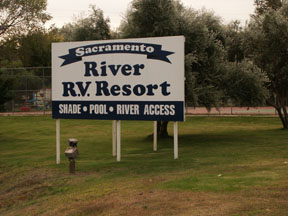
Sacramento River RV Resort: The Sacramento River RV Resort is located on Riverland Drive on the west side of Interstate-5, south of the Knighton Road exit next to JGW RV. Exit 673 is approximately five miles south of Redding. (530) 365-6402. www.sacramentoriverrvresort.com. Email info@sacramentoriverrvresort.com. Beautifully shaded, the resort offers a concrete boat launch for high water conditions and a dirt launch for low water conditions. Launch fees for non-guests is a bargain $3.
Marina RV Park: The Marina RV Park is located at 2615 Park Marina Drive. Although it is not a park like setting with lots of shade, it is within walking distance to restaurants and movie theaters. The launch fee for non-guests is $22.
